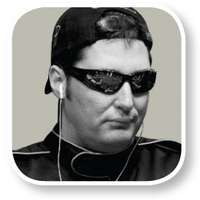






More Tales from the 2008 World Series of PokerMore Tales from the 2008 World Series of Pokerby Phil Hellmuth | Published: Aug 10, 2011 |
|
|
 Here’s an interesting hand from the 2008 World Series of Poker:
Here’s an interesting hand from the 2008 World Series of Poker:
I was really struggling through the tournament on day 4 while playing at the ESPN featured table. No, I didn’t lose with K-K versus A-A, nor did I have the misfortune to lose in a set-over-set scenario. Still, during one four-hour stretch, I raised about 20 pots, was reraised an amazing 19 times, and then folded every single hand!
Could I have moved all in and won any of those pots? Definitely, but I also could have busted myself out of the tournament by making that risky move. I just never got a legitimate hand with which I could make a move, only hands that had the potential to get me in trouble, like A-J, K-J, K-Q, Q-10, and A-X suited.
Well, I finally got J-J and raised from late position. Guess what? The big blind reraised. I called, and the flop came K-Q-7. My opponent bet, and I mucked my pocket jacks face up on the table. Man, my frustration-level was soaring.
I mean, really, how is it possible to fold 19 out of 20 hands to a reraise and then have to lay down pocket jacks on a flop? Wow.
In another hand against that same player, I looked down at 8 8
8 and tossed in a bet. My opponent called, and everyone else folded. The flop came J
and tossed in a bet. My opponent called, and everyone else folded. The flop came J 9
9 2
2 . I bet, and he called.
. I bet, and he called.
The turn was the 8 , giving me a set, but now there was a possible straight on the board. I slow-played my hand and checked, my opponent made a smallish 35,000 bet, and I called.
, giving me a set, but now there was a possible straight on the board. I slow-played my hand and checked, my opponent made a smallish 35,000 bet, and I called.
The 4 hit on the river. This time, I bet out 60,000, and Mr. X raised it 95,000 more. I quickly called and got the bad news when he showed me Q-10 for his straight.
hit on the river. This time, I bet out 60,000, and Mr. X raised it 95,000 more. I quickly called and got the bad news when he showed me Q-10 for his straight.
Okay, let’s dissect my play.
I slow-played my hand on the turn for two reasons: I wanted to keep the pot small in case additional flush or straight cards hit on the river, and I wanted to feign weakness in order to induce a big bet from my opponent.
Now, most players would have made a big raise with three eights in this situation in order to protect their hand, but I sensed that my opponent thought I was weak and that he would likely try to bluff me on the river.
That’s why I bet out on the river and then called his raise. I knew I could beat a lot of hands, like a set of deuces or fours, as well as any two pair.
That being said, there was also a decent chance that my opponent was actually super-strong, and I credit Joe Navarro’s book, Read ’Em and Reap, for helping me pick up that tell. The reason I didn’t raise on the river was that I noticed that my opponent had his hands formed in the shape of a steeple.
According to Navarro, the steeple is a sure sign of strength at the poker table. So, yes, I correctly picked up the tell, but no, I didn’t properly act on that information.
Had I paid closer attention, or just slowed down for an extra 20 seconds before making my bet, I might have saved myself at least 100,000. I should have checked instead and at least given myself the opportunity to fold my set of eights to any big bet.
Fortunately, I was able to survive day 4 and move on. It certainly helped that I had a pretty healthy chip stack and that the tournament structure was the slowest in WSOP history. As a result, skilled players like me had ample time to play patiently while waiting for the novices to play recklessly and crumble. ♠
Learn more about Phil by going to his website, www.PhilHellmuth.com, and visit his webstore at www.PokerBrat.com.
Features
The Inside Straight
Strategies & Analysis
Commentaries & Personalities